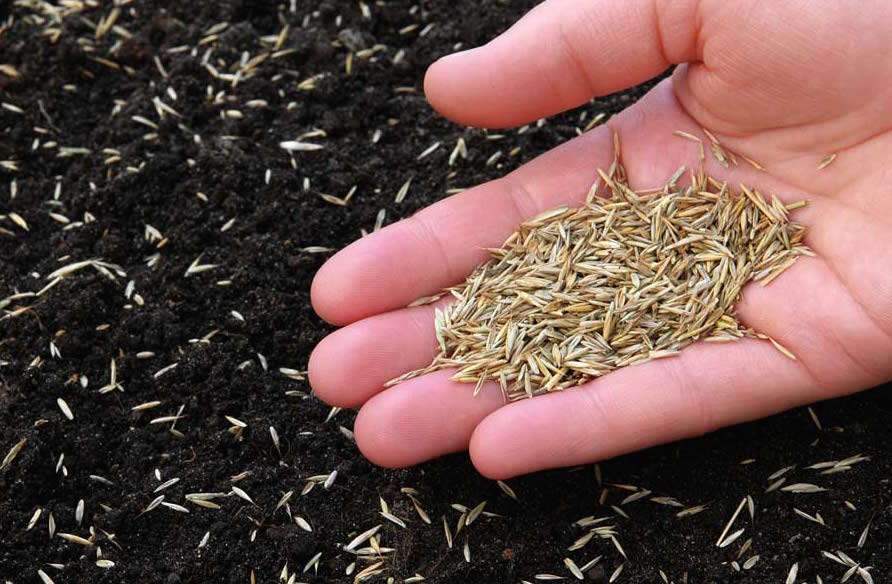If your lawn needs a fresh look, planting grass seed is an effective way to spruce up your yard. With the right tools and techniques, you’ll be able to enjoy a beautiful green lawn in no time.
Whether you’re a beginner or an experienced gardener, this guide will help you learn how to seed a lawn so you can enjoy healthy, vibrant lawn grass.
Before You Start Planting Grass Seed
Before you plant grass seed, here are a few things you need to know:
- The health of your soil will play a critical role in your success, and before you plant is the best time to test your soil and add amendments.
- If you’ve applied herbicides in the past month, it may inhibit the growth of your grass seedlings.
- Learning how to choose the right type of grass seed for your area is important.
- There are different ideal growing conditions for every type of grass.
Start with healthy soil and the correct type of grass, and then make sure it’s the best time of year to plant grass. Once you know the details of how to grow grass from seed, you are on your way to a lush, green lawn.
Use the Right Type of Grass Seed for Your Area
Turf grass is categorized as either cool-season or warm-season. Therefore, the first step to success in growing grass from seed is choosing the right type of grass seed for your area.
Cool-season grasses like perennial ryegrass and fescue grow best in cold regions because they like a lot of moisture and cooler temperatures. They can germinate in colder soils than warm-season grasses can.
Warm-season grasses like Bermuda grass or zoysia grass tolerate drought and hot weather much better than cool-season grass, but they won’t germinate in cold soil. Your grass will grow best during peak growing conditions and may go dormant at other times of the year.
That’s why cool-season grasses often wither when the weather gets too hot, and warm-season grasses turn brown in the winter.
Choose the Best Time of Year
Grass needs time to establish strong roots before it’s subjected to harsh weather, so it’s essential to understand the best time to plant grass. In warmer zones of the United States, the best time to plant grass is in the spring, and in northern regions, the best time is in the fall.
Even though fall is the best time, cool-season grasses can also be planted in the spring. They will germinate and grow but will be susceptible to scorching hot weather, so you’ll have to water them frequently during the summer.
Supplies You’ll Need to Plant Grass Seed
Having healthy soil and the right materials is just as critical as knowing how to plant grass. Choose quality grass seed, fertilizer, lime, and soil amendments.
Grass Seed
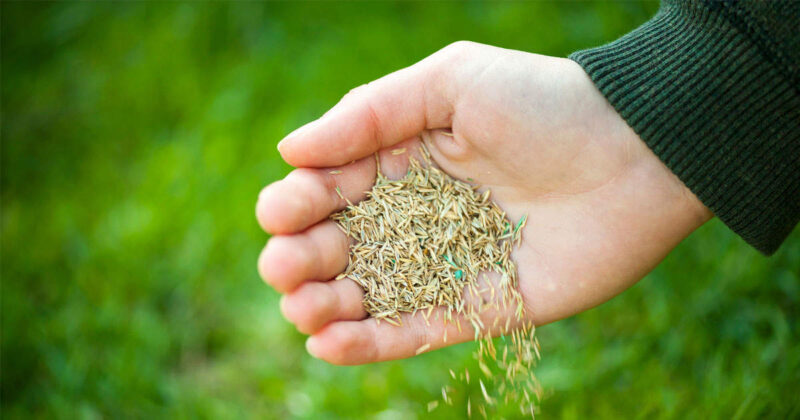
Start with quality seed that is suited to your climate. Whether it’s warm-season, cool-season, or a unique blend made for your area, choose grass seed mixes designed for home lawns. You can find the best seed mix for your yard with a bit of research.
To conserve water, choose drought-resistant grass seed. If your yard is shady, look for grass seed specifically developed for low-light areas.
Some grass mixes include starter fertilizer or a filler product that helps distribute the grass seed evenly, but you should avoid grass seed mixes with herbicides, as the harsh chemicals can harm your grass seedlings.
Fertilizer and/or Lime
Healthy soil is essential to your success when growing grass from seed. Grass thrives with a pH between 6.0 and 7.5, and it needs a balance of nutrients to grow. It requires the right combination of oxygen, hydrogen, carbon, nitrogen, phosphorus, and potassium for optimal growth.
Determining the health of your soil and adding amendments shouldn’t be considered an optional step. Even though you may see signs that your soil is healthy, conducting a soil test is the only way to know what to add for the best results.
Your local extension office can help you obtain soil test kits and locate soil testing facilities near you. The soil test results will help you determine what to add to your soil to provide the proper nutrients for your lawn.
Lawn Soil or Turf Builder
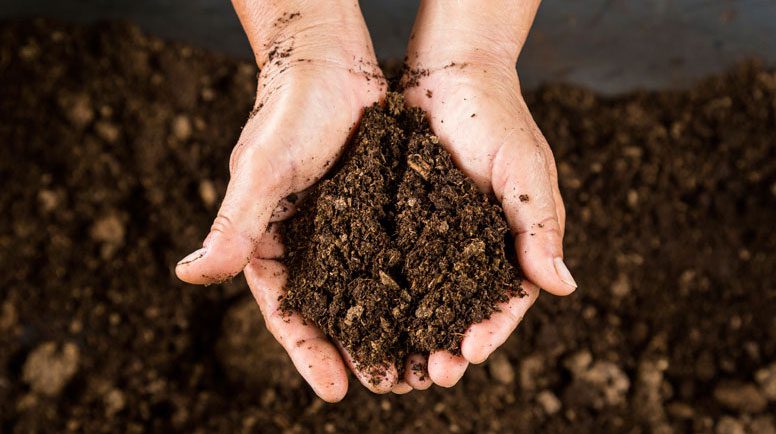
Healthy soil has sufficient organic matter, good soil structure, excellent drainage, microbial activity, and balanced nutrient levels. Once you’ve added nutrients according to your soil test results, you need to add lawn soil or turf builder to enhance the soil structure.
Lawn soil amendments will ensure your soil drains well without washing away nutrients. This allows your new lawn to grow stronger and faster.
Soils with a lot of clay tend to become compacted, which doesn’t allow oxygen into the ground. On the other hand, nutrients get washed away in soils that are too sandy.
When you use lawn soil or turf builder, you add organic matter, which solves both problems.
Seed Spreader (Optional)
Using a seed spreader can make the job of seeding your lawn much more manageable and ensure the grass seed is evenly distributed. While it’s optional, a seed spreader for large areas is recommended.
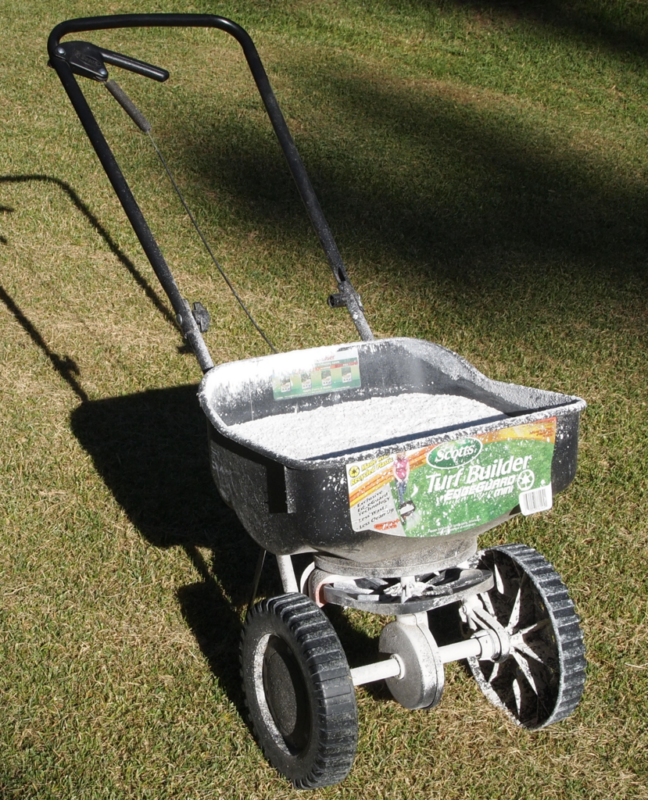
Broadcast spreaders for spreading seeds, fertilizers, and other lawn products are perfect for home use. Many landscaping professionals use high-quality, commercial-grade broadcast spreaders because they hold up with frequent use.
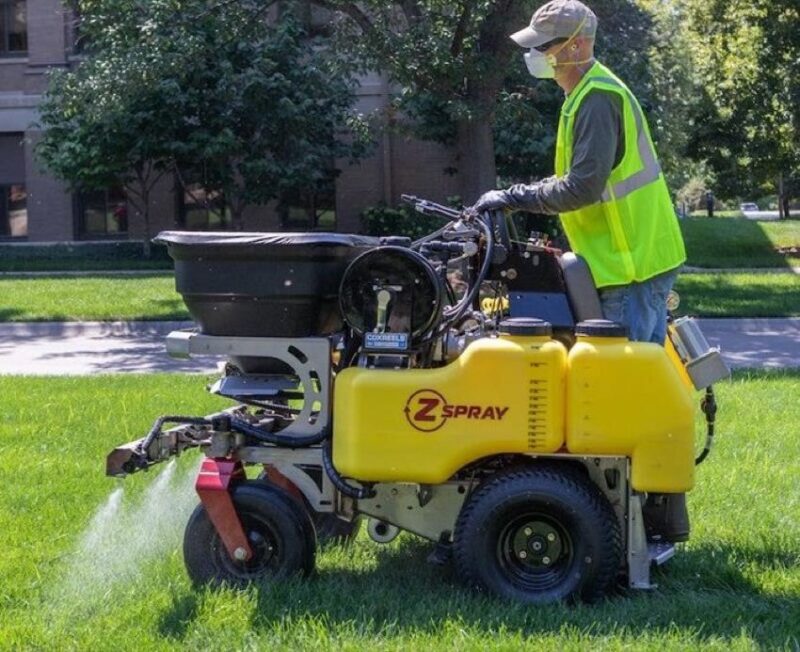
Stand-on sprayers provide upgraded features for lawn care professionals. With features like zero-point maneuvering and the ability to spray seed or liquid fertilizer, this equipment makes light work of big jobs.
How to Seed a New Lawn
You’ll have the most success if you follow these five steps when planting grass seed.
Step 1: Prepare the Soil
Start by removing existing weeds and debris, then till the soil to a depth of three to four inches. This removes any large clumps and aerates the soil.
Keep the soil as level as possible, but add contours to promote drainage away from your house if necessary.
Step 2: Add Nutrients if Needed
Test the soil and add fertilizer or amendments to ensure your new lawn gets the best start.
Step 3: Plant the Grass Seed
Use a crisscross pattern to spread grass seeds evenly over the soil. Then, rake the seed into the top layer, getting it as level as possible.
Step 4: Protect the Grass Seed
Rake the area again to ensure that a ¼” layer of soil covers the grass seed. Then, use an erosion mat or light layer of weed-free mulch to protect the grass seed from birds, wind, and heavy rains.
Step 5: Water the Seed
Water the newly planted grass seed thoroughly and keep the topsoil moist until the grass has been established. Next, water newly planted areas two to three times a day with a light spray and taper off the watering frequency as the grass matures.
How to Overseed an Existing Lawn
In warm regions, you can overseed your lawn with cool-season grasses to keep them green in the winter. Follow these steps to overseed an existing lawn.
Step 1: Prepare the Existing Lawn
Prepare your existing lawn for overseeding by cutting it shorter than usual. Bag the clippings and rake the grass to thin the turf.
Step 2: Prepare the Soil for Growing Grass
Grass seed needs light, moisture, and soil to grow. First, aerate the lawn, then spread compost over the area to be seeded. Rake in the compost evenly and then spread a starter fertilizer over it.
Step 3: Seed the Lawn
After you spread the grass seed according to the rate recommended on the packaging, rake it loosely into the soil.
Step 4: Protect the Grass Seed
Protect the newly planted grass seed with a thin layer of mulch or compost. You can also use an erosion control blanket to protect it until it has sprouted.
How to Seed Patches in Your Lawn
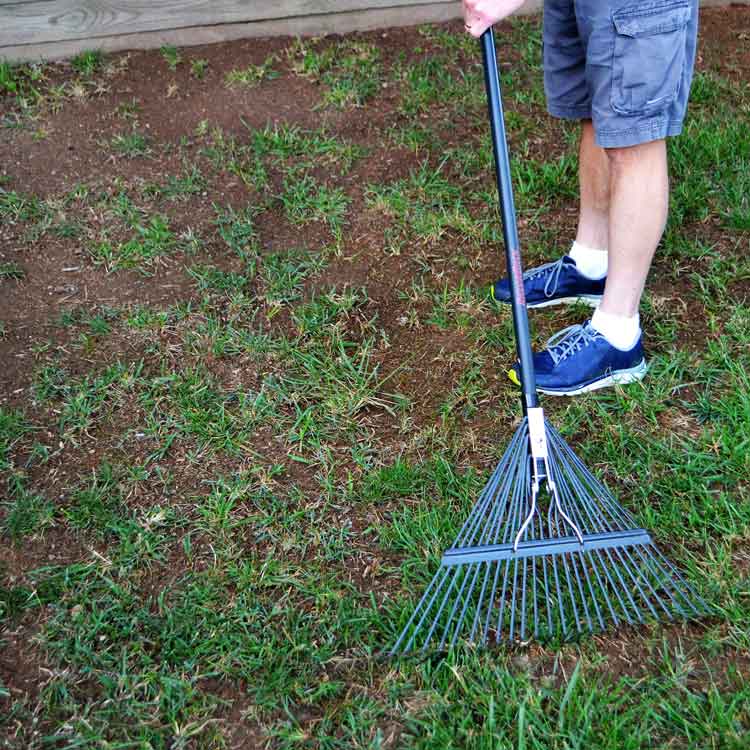
Lawns develop patchy or bare spots for various reasons, such as poor soil conditions, diseases, and fungal infections. However, it’s easy to patch your lawn with a few simple steps.
First, prepare the soil by removing debris and damaged grass. Loosen the dirt about six inches deep, working six to eight inches into the surrounding grass. Add a layer of compost or lawn soil and level the area.
Next, spread the grass seed evenly and lightly rake the seed into the ground. Water the area thoroughly, and keep it moist until the grass seed takes root.
Using sod works best for larger damaged areas. Prepare the soil as you would for seeding, but remove excess soil if necessary to keep it level with the rest of your lawn.
Walk gently on the sodded area to ensure the roots make good contact with the ground underneath.
What to Do Before the Grass Starts to Grow
Now that you’ve planted your grass seed, it has everything it needs to become a lush, green lawn; except for one thing–water.
You must water newly planted lawns at least once a day, often two or three times, depending on the weather. Keep a close eye on the top layer of soil until your grass is at least an inch tall, and make sure it doesn’t dry out.
Be careful not to overwater, though. Overwatering can lead to damp, soggy soils that cause seeds to rot.
Monitor Seed Growth
Once your grass germinates, closely monitor its growth and water requirements. The roots will take about two to three months to fully establish, and your lawn will be vulnerable to high temperatures, harsh weather conditions, and heavy traffic during that time.
If you notice bare spots, now is the time to plant grass seed in those areas.
Mow and Maintain Your New Grass!
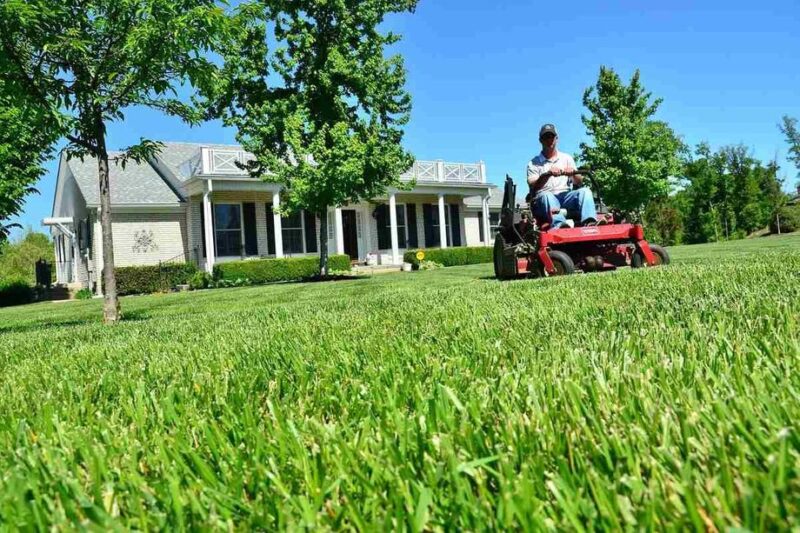
When your grass reaches about three inches, it is ready to be mowed. Congratulations!
Set the blades high the first time you mow your new lawn, and continue to protect your grass from heavy traffic during its first year. You can start fertilizing at about four to six weeks, but you should wait until it’s three to four months old before using herbicides or other harsh chemicals.
Grass Seeding FAQs
How long does new grass seed take to grow?
Germination depends on sunlight, moisture, and temperature conditions. Grass seed germinates in as little as five days, but it can sometimes take up to 30 days. Therefore, it will be about three months before the grass is established enough to mow.
Can you just sprinkle grass seed on top of your existing lawn?
Unless you prep your lawn by mowing it short and raking it thoroughly, sprinkling grass seed on top of it will not yield the best results. The germination rate will be low, and the grass seed won’t be able to take root in the ground.
Will grass seed grow if I just throw it down?
If you throw grass seed down, it might grow, but if you take the time to prepare the soil and water it, you can be confident it will grow. Following the recommended steps for seeding grass results in a lush green lawn, whereas just throwing it down leads to weak, patchy growth.
Will grass seed germinate on top of the soil?
Grass seeds will germinate on top of the soil, but germination has to be followed by root development. A thin layer of soil on top of the seeds will protect them from the elements and help keep them in place so they can develop roots.
Seeds need consistent moisture to germinate, and soil holds moisture. If the seeds germinate and then dry out, they can die before they get a chance to develop roots.

